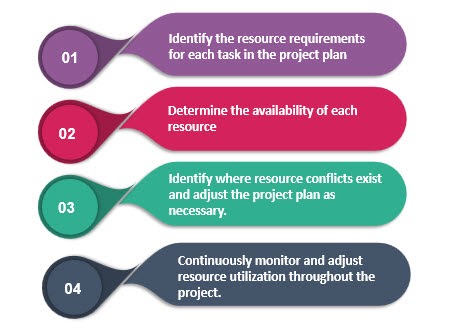How To Optimize Resource Levelling in Your Business?
Resource levelling is a project management technique that involves balancing the workload of resources to ensure that the project is completed within the scheduled time and budget. This technique is necessary because resources are usually limited, and conflicts arise when they are over- or under-utilized. Resource levelling aims to optimize resource allocation by smoothing out the project's resource requirements and reducing the peaks and valleys of resource demand.

Resource levelling is an iterative process that involves analyzing the project schedule, identifying resource requirements, and reallocating resources to ensure that they are used efficiently. The process involves adjusting the project schedule by delaying or accelerating activities, reallocating resources, or reducing the scope of work to avoid overloading the resources.
The key objective of resource levelling is to avoid resource conflicts and ensure that resources are utilized effectively to achieve the project's goals. It also helps to identify potential resource constraints and allows for early planning to resolve them. Resource levelling is an essential tool for project managers, and it helps to improve project efficiency, reduce cost, and increase project success rates.
What Is Resource Levelling?
Resource levelling is a technique used in project management to adjust the utilization of resources in a project to minimize overutilization or underutilization of resources. The objective of resource leveling is to assign resources in such a way that the overall workload is balanced and resources are not overburdened or underutilized.
This is achieved by rescheduling work tasks or activities, prioritizing tasks, shifting resources as necessary, and modifying the project plan to ensure that project milestones are met within the available resources. Resource levelling helps to improve project efficiency, reduce costs, and improve project outcomes.
The process of resource levelling involves four main steps:
- Identify the resource requirements for each task in the project plan.
- Determine the availability of each resource.
- Identify where resource conflicts exist and adjust the project plan as necessary.
- Continuously monitor and adjust resource utilization throughout the project.
What Is Resource Levelling?
Resource levelling is necessary to ensure that the available resources are utilized in a uniform and efficient manner throughout a project. This ensures that no particular resource is overworked or underutilized, preventing burnout and unnecessary expenses. It also helps to prevent delays or bottlenecks in the project by evenly distributing resources to various tasks. Resource leveling ensures that the project is completed within the specified time frame and budget, which is crucial for the success of any project.

Additionally, resource levelling assists project managers with identifying and resolving potential conflicts early in the project. For example, if two tasks require the same resource but cannot be completed simultaneously, resource leveling will ensure that those tasks are scheduled in a way that minimizes the impact of the conflict on the overall project timeline.
Overall, resource leveling is a critical component of project management, helping to ensure that projects are completed on time, within budget, and with a minimal risk of resource-related issues. By considering the availability and capacity of resources throughout the project and adjusting as needed, project managers can ensure that their projects run smoothly and successfully.
The Benefits of Resource Levelling
- Smoother project progress: Resource leveling helps to ensure that a project progresses as smoothly as possible by ensuring that resources are optimally allocated. This means that there are no sudden surges in demand for resources, leading to bottlenecks and delays in completing tasks.
- Improved morale: Resource leveling helps to avoid overworking individual team members, which can lead to burnout and lower morale. By balancing workloads, team members feel that their work is being appreciated and that they are not being overworked.
- Better project completion time: Resource leveling helps to ensure that project tasks are completed on time. By maintaining a steady workload, resources can be utilized efficiently, and the project can be completed within its intended timeframe.
- Improved communication: Resource leveling encourages open communication among team members as they work together to identify potential resource conflicts and resolve them. This helps to keep everyone on the same page and improve team collaboration.
- Better resource management: Resource leveling helps project managers to better manage resources. By using resources effectively, managers can better utilize the skills and experience of individual team members, reducing the risk of overallocation or underutilization of resources.
Conclusion
In conclusion, resource leveling is a critical technique in project management that helps to ensure that limited resources are allocated and used efficiently and effectively. It involves analyzing and adjusting the utilization of resources to avoid overutilization or underutilization of resources during a project's execution. This technique is especially crucial in complex projects with multiple activities and tasks that require different resources, budgets, and timelines. With proper resource leveling, project managers can optimize their resources, reduce time, and cost overruns, and improve the quality of the project's deliverables. Therefore, it is essential for project managers to understand and implement resource leveling as part of their project management strategies.



